The Fairmount College newsletter is published two times a year. For information, contact
Cheryl K. Miller, writer and coordinating editor, at 316-978-6659 or cheryl.miller@wichita.edu.
Follow Fairmount College on Social Media
You’ll find events, photos and articles about our faculty, staff, students and departments.
Photo credits: Cheryl K. Miller and courtesy photos
WSU Professor, Students Continue Research on Archaeological Discovery
By Emily Mullins

This map overlay outlines the likely area of Etzanoa. It also shows the route Spaniards
are believed to have taken into the Wichita town and of a battle fought there in 1601.
Don Blakeslee, professor of anthropology, recently presented archaeological evidence that shows
a thriving ancestral Wichita Indian town of more than 20,000 residents near Arkansas
City, Kansas.
The site, known as Etzanoa, is located near the confluence of the Arkansas and Walnut
rivers. It rivals the Cahokia site in western Illinois as one of the largest Native
American settlements in North America.
“By joining the historical written record to the archaeology, we ended up rewriting
both fields,” said Blakeslee. “Rather than a cluster of 30 little villages, there
was a single town of 20,000 people.”
Research of the town has completely revised the understanding of protohistoric settlements,
established 1400 to 1700 AD, in the southern plains. Previous scholars often dismissed
the Spanish population estimates as exaggerations, but with the evidence of the archaeological
finds they can no longer be discounted.
“One implication is that Old World epidemic diseases had not yet reached this region,
but probably did so by around 1650, because there were far fewer Wichitas when the
French arrived in 1718,” said Blakeslee.
Blakeslee reported archaeology that coincides with eyewitness accounts from five soldiers
of Spanish explorer and founder of New Mexico, Juan de Oñate, who were interviewed
in Mexico City in 1602.
Scattered surface finds match the description of the town as extending about five
miles, and the description of the landscape and route of the Spanish army also line
up. Over the years, researchers and local landowners have found multitudinous pottery
shards, arrowheads and other hand-hewn flint tools. The biggest piece of confirmation
came with the discovery of the site of a battle fought there in 1601. Metal detectors
were used to uncover small iron shot from in front of the ravine where natives took
shelter and well beyond it where shots eventually fell.
Blakeslee began work at the site in 2015 when he invited leaders of the Wichita tribe
to visit and spent a week there researching. He’s been able to involve WSU students
with the research as well and has taken them to the site each summer since.
In June, Mitchell Young, a senior majoring in anthropology, discovered a rusty horseshoe nail of Spanish
origin at the site. Blakeslee hypothesized that it was probably traded between one
of Juan de Oñate’s troops and an Etzanoan.
“Work at Etzanoa will continue for the rest of my career and beyond,” said Blakeslee.
“It will be an important part of WSU’s future.”
Cheryl Miller contributed to this article.
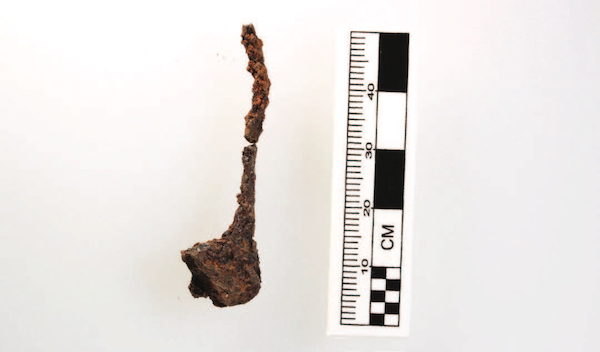
Mitchell Young, a senior in anthropology, found this Spanish horseshoe nail at the
Etzanoa site.
Faculty Spotlight: Don Blakeslee
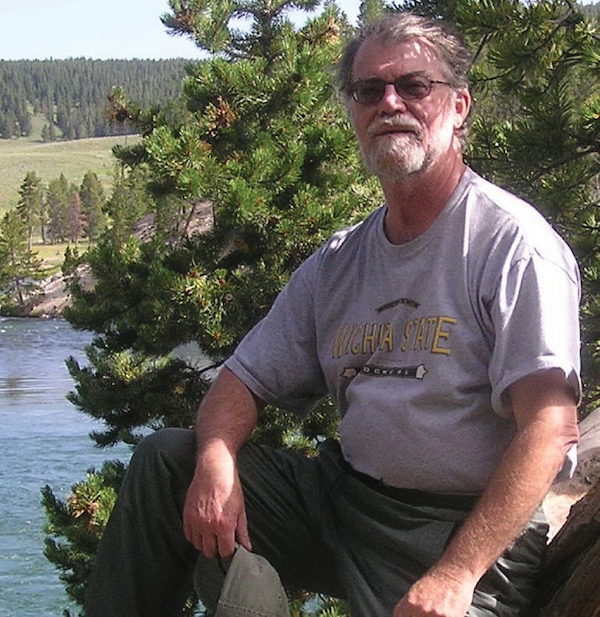
Long known as one of the leading archaeologists working in the Great Plains, Don Blakeslee, professor of anthropology, has broad research interests ranging from the time of
the earliest settlement of the Americas to the historic period. Presently he is working
on the archaeology of the ancestral Wichita people in Kansas between 1400 and 1700
AD, research that includes Etzanoa, one of the largest archaeological sites in the
United States.
He became interested in archaeology as a young man.
My first real interest came through a summer job doing archaeology in Wyoming and
Montana,” Blakeslee said.
Twelve weeks of camping in tents, digging in caves and on mesa tops.
He said the most fascinating aspect of the discovery of the Etzanoa site is that it
has completely changed the view archaeologists hold of the people of the Great Plains
at the beginning of the historic period.
“Previously, we were thinking in term of clusters of villages of a few hundred people
each,” Blakeslee said. “Now we have a town of at least 20,000 people—which was just
one town in Quivira—which controlled an area larger than the Republic of Ireland.
Blakeslee came to Wichita State in 1976. He earned his bachelor of arts and master
of arts in anthropology from the University of Nebraska at Lincoln and his doctorate
in anthropology at the University of Wisconsin-Milwaukee. He is married to Joy. They
have four children, three grandchildren (with another on the way), two dogs and two
cats.
Blakeslee was interviewed on National Public Radio s “All Things Considered” about
Etzanoa. You may listen to the interview or read the transcript at http://n.pr/2qeBmys.
Youngmeyer Ranch Permanently Protected with Conservation Easement
By Cheryl Miller

The Youngmeyer Ranch in Elk County is preserved forever.
Through a voluntary agreement between the Earl W. Jr. and Terri Youngmeyer Family
Foundation and the Kansas Land Trust, the 4,676-acre tallgrass prairie property is
permanently protected from development and will remain an ecological research site
for Wichita State University.
“We are deeply indebted to the Youngmeyers and Kansas Land Trust,” said Bill Bischoff, professor of geology and former dean of Fairmount College, at the official dedication.
“We will share all knowledge we gain for the preservation and betterment of the tallgrass
prairie ecosystem.”
The agreement, known as a conservation easement, was fnalized in December 2016. The
dedication of the easement was celebrated on June 6 at the Youngmeyer Ranch. Representatives
of Wichita State University, the WSU Foundation, local ranchers, and conservation
and energy professionals attended.
To create a conservation easement, a landowner and a recognized conservation organization
enter into a voluntary agreement that allows the landowner to retain ownership but
with limitations on the amount and types of development of the property. The easement
is held by the conservation organization and the terms of the agreement are enforced
in perpetuity, even if land ownership changes.
The Youngmeyer Ranch conservation easement held with the Kansas Land Trust allows
the property to remain a working ranch. The prairie may not be plowed under, although
it may be grazed by livestock. The ranch may not be subdivided.
Daniel Offidani, trustee for the Youngmeyer Family Foundation, was instrumental in creating the conservation
agreement. He said the Youngmeyers would be pleased with the easement.
“Earl and Teri did not have any children,” O”dani said at the dedication. “They didn’t
have any close family that survived them. This ranch was their child and like most
parents it meant everything to them.”
The greatest benefit to Wichita State is through research and educational capacities.
Faculty and students have endless opportunity to study how Kansans can improve the
sustainability of ranching and the enhancement of wildlife found in biologically rich
areas like the Youngmeyer Ranch. This will benefit ranchers and their generations
to come, said Greg Houseman, associate professor of biological sciences.
“Our research will address concerns in our region,” said Houseman. “Many think KSU
and to a lesser extent KU are the only ones doing this type of research, but we are
working to change that view.”
The Land Around Youngmeyer Ranch
According to Bill Bischoff, professor of geology and former dean, the rocks on Youngmeyer Ranch were formed
during the Permian period, which occurred 240–280 million years ago. This area of
Kansas was a warm, shallow sea, similar to that now found in the Bahamas. Life forms
included fusilinids, brachiopods, crinoids, trilobites, and bryozoans, an abundant
organism preserved in these rocks. For reference, the Appalachians were completed
at the beginning of the Permian, a time of glaciation. At the end of the period, the
largest mass extinction in geologic history took place.
Siberian traps, produced by an era of extreme volcanic activity, caused the mass extinction.
Enormous food basalts released large amounts of carbon dioxide and sulfuric acid into
the atmosphere. These chemical compounds acidifed the oceans and lowered their pH
levels. In such a hostile environment, life forms could not secrete calcium carbonate,
which is essential for forming exoskeletons.
The Youngmeyer land is still being shaped by geologic forces today.
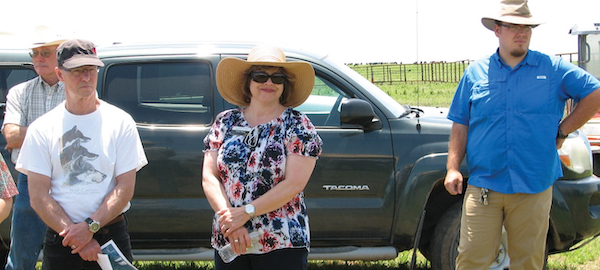
Bill Hendry, biological sciences, Kristi Oberg, WSU Foundation, and Dexter Mardis,
field station
manager, listen to remarks at the Youngmeyer dedication.
The Youngmeyer Ranch provides rich opportunity for ecological studies by scientists.
To date, surveys show the following numbers on the ranch:
- 490+ Plant Species
- 57 Bird Species
- 11 Mammal Species
- 10 Frogs + 1 Salamander + 6 Turtles +7 Lizards + 19 Snakes = 42 Species of Amphibians
and Reptiles
Grants
- George Bousfield, Lawrence M. Jones Distinguished Professor, biological sciences, was awarded a five-year
renewal of a grant with the National Institute on Aging, one of the National Institutes
of Health. In September his proposal, “The Aging Pituitary/ Gonadal Axis,” was funded
$1,801,381 for the first year of a five-year award that will potentially yield $8,628,697.
Bousfield began receiving support for this research in 2009. The purpose of the project
is to determine the effects of an age-related change in follicle-stimulating hormone
glycosylation on fertility, osteoporosis and obesity. In young women, most FSH is
missing one of its four carbohydrates and is more active. As women age, more of the
FSH is fully glycosylated– the process by which sugars are chemically attached to
proteins to form glycoproteins— and has less biological activity. The loss in FSH
activity causes the body to secrete more of the less active FSH forms. This action,
and increased obesity. Bousfield’s study aims to shed light on the mechanisms involved
in these processes.
- Rocío Del Aguila and José Enrique Navarro, both assistant professors of Spanish, procured a $10,000 Kansas Humanities Council
grant for the “Cocin(ando) Wichita” interdisiplinary project about tradition, immigration,
storytelling and empowerment through recipes. The purpose of the project to honor
the cooking traditions of Hispanic immigrants in Wichita. It also acknowledges the
immense value of people who have kept their cooking traditions in the places where
they immigrate and how that has shaped their culture and their communities. Carolyn Speer, manager of instructional and design technology, serves as the humanities consultant.
- Katie Mitchell-Koch, assistant professor of chemistry, has received two grants totaling nearly $545,000
from the National Science Foundation. One of the research projects—$368,000 for “Unraveling
Connections Among Biomolecular Structure, Interfacial Solvent Dynamics and Conformational
Dynamics”—focuses on the movement of solvent molecules around enzymes. Working with
Virginia Tech professor Vinh Nguyen, Mitchell-Koch will gain knowledge in the fundamental insight into biomolecular function
and the link between solvation environment and enzyme catalysis. That could result
in lower energy costs and more efficient production of fine chemicals and pharmaceuticals.
Mitchell- Koch was also one of 30 researchers in the United States to receive funding
from the NSF’s Established Program to Stimulate Competitive Research. She was awarded
$176,284 for her research at the University of inois Urbana-Champaign with collaborator
Kami Hull, a professor in the UIUC School of Chemical Sciences. Their work focuses on characterization
of chemical syntheses carried out by rhodium and iridium catalysts. The catalytic
reactions are used to create complex molecular architectures, like those in drug candidates
and pharmaceuticals.
- A collaborative study between Wichita State University, the University of Kansas Medical
Center and a Kansas State University-led team of psychological sciences researchers
has received a five-year, $10.6 million Centers of Biomedical Research Excellence
grant. Of this grant, WSU received a sub-award for its collaboration with KSU, totaling
$1,781,344. Rui Ni, associate professor of psychology and project leader for two projects, plans to
use $1,008,870 of this funding to further his research on the neuronal plasticity
among older adults, to develop training procedures to improve their visual cognitive
functions, and to look for transferred learning effects on driving performance. The
remaining $772,474 will go toward a state-of-the-art 3D high-fidelity driving simulator
that will use advanced technology, such as eye tracking, to study driving behavior.
Accolades & Announcements
Faculty & Staff
- Andi Bannister, professor of criminal justice, has been named the interim director of the School
of Community Affairs. Bannister serves concurrently as director of the federally-funded
Regional Community Policing Institute at Wichita State. She has been awarded more
than $8 million in federal grants over the past 10 years. She has conducted research
in Europe and Asia, provided training on computer crime and community policing to
the Royal Thai Police, and provided training and technical assistance to a wide range
of police agencies, notably in Kansas and Nebraska. Bannister is an academic fellow
with the Washington, DC-based Foundation for the Defense of Democracies and has studied
terrorism issues in Israel with police, military and intelligence organizations as
part of that fellowship.
- George Bousfield, Lawrence M. Jones Distinguished Professor, biological sciences, was an invited speaker
at the International Conference on Gonadotropins and their Receptors – Gonadotropin
Releasing Hormone Congress in Modena, Italy. The title of his talk was “Update on
glycosylation in FSH-FSHR interaction and signaling.”
- Rocío Del Aguila, assistant professor of Spanish and Spanish graduate coordinator, was named the 2017
recipient of the Drum Major Award, given annually at the Martin Luther King Unity
Walk held at Wichita State University. In addition to teaching courses on Spanish,
Hispanic culture and Latin American literature, she also co- advises the WSU chapter
of Sigma Delta Pi, the Hispanic honor society, and provides outreach to the Hispanic
community at high schools and service-learning projects.
- Marché Fleming-Randle, formerly assistant to the president for diversity and senior assistant dean, has
been promoted to vice president for diversity and community engagement.
- Jeffrey Jarman has been named director of the Elliott School of Communication. His primary research
interests are analyses of political deliberations within the public sphere, including
the influence of political debates and fact-checking on the public. He teaches courses
in strategic communication, political communication and research methods. Jarman is
also the director of Wichita State’s competitive debate program. Since 1999, he has
authored the annual overview of the new high school debate topic used by thousands
of high school debaters around the nation.
- José Enrique Navarro, assistant professor of Spanish, is the 2017 recipient of the Benson Latin American
Collection-South Central Modern Language Association Faculty Research Grant. He conducted
archival research on book trade in Argentina in the 20th century at the Nettie Lee
Benson Latin American Collection at The University of Texas at Austin.
- Arwiphawee Srithongrung, associate professor of public administration, was invited by Columbia University
to present her paper “The Thai Economy After the 2014 Regime Change: A Fiscal and
Monetary Assessment” at the Thai Update 2017. It was the third annual conference organized
by Weatherhead East Asian Institute, Columbia University, for academic experts to
exchange updated knowledge regarding politics, economics and laws in Southeast Asian
regions.
- Mark Schneegurt, professor of biological sciences, was contacted by the Hartman Institute to have
excerpts published from one of his historical works in a source book used for rabbinic
training. The excerpts also will appear in a smaller publication that will be distributed
for free to 20,000 synagogues in North America. His work is a translation he made
from the Hebrew of inserts to Psalm 122 that are known only from the Ethiopian Jewish
community and connected with the Sigd holiday.
Student
- Emmy Engasser and Rachel Stone, graduate students in biological sciences, were featured guests on the public radio
show Science Friday. They shared their research on beetles—more specifically, dung
and carrion beetles—during their segment on Sept.15. You may listen online here: http://bit.ly/2zh1nAx.
It was recorded live at Wichita’s Orpheum Theater. Science Friday is broadcast weekly
to 1.8 million listeners over 374 public radio stations.
- The Sunflower, WSU’s student newspaper, placed second in the Best of Show competition
at the National College Media Convention in Dallas. It competed with the student newspapers
of much larger schools, such as the University of Illinois and the University of Minnesota.
Chance Swaim, graduate student, creative writing, is the editor- in-chief. Amy DeVault, instructor, Elliott School of Communication, advises The Sunflower staff.
Retirements
- Christopher K. Brooks - professor emeritus, English
- Gail Burkett - Fairmount lecturer, French
- Almer J. Mandt - associate professor emeritus, philosophy
- David E. Soles - professor emeritus, philosophy
- Deborah H. Soles - professor emerita, philosophy
New Hires
- Samantha Gregus - assistant professor, psychology
- Stacey Mann - clinical educator, School of Social Work
- Rannfried Thelle - assistant professor, women’s studies and religion
- Maryam Zahabi - assistant professor, psychology
In Memoriam
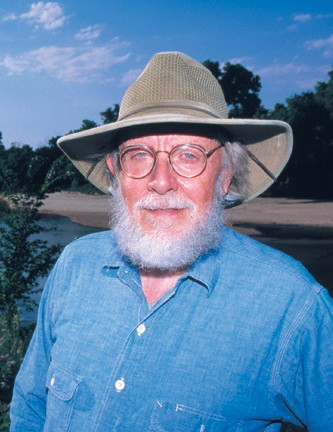
Paul Magelli, 89, died June 28. An associate professor of biological sciences for more than 50
years, he spent a good portion of his professional and personal life establishing,
studying and maintaining the Wichita State University Biological Field Station: Ninnescah
Reserve. Memorials may be made in Doc’s name to the charity or organization of the
donor’s choice.
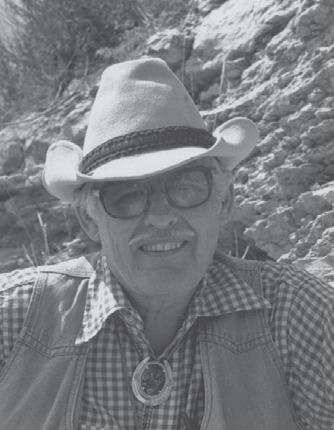
Daniel Merriam, 90, died April 26. He was professor emeritus and previous chair of the department
of geology. Most recently he was historian for the department of geology at the University
of Kansas and the Kansas Geological Survey, as well as the historian and archivist
for the International Association for Mathematical Geosciences. Memorials may be made
to the Daniel F. Merriam Scholarship Fund at the University of Kansas or the University
of Syracuse, or to the Daniel F. Merriam Fellowship at Wichita State University.
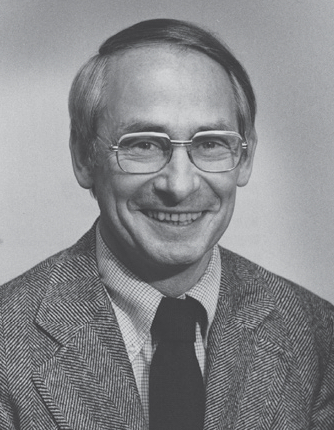
George Platt, 86, died June 2. An associate professor emeritus of public affairs, Platt came to
Wichita State University in 1969. During his career, he held positions as associate
professor of political science, associate professor of public affairs, and associate
vice president of planning and institutional research. He also served as the centennial
coordinator for Wichita State.
Dean's Message
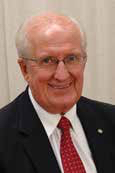
Dear alumni, faculty, staff and friends,
The past few months of 2017 have brought some real successes to Fairmount College.
We entered into a successful full-on blitz to increase Wichita State and Fairmount
College enrollments. Research and teaching are the core elements of academic life,
and there have been noteworthy successes in this arena as well. The implications of
Fairmount College faculty retiring and leaving employment in nearly record numbers
over the past year has produced a rare opportunity for hiring. Fifteen faculty positions
were released to more than half the Fairmount College departments that are now recruiting
new people. This is a welcome event after nearly three years of almost no recruiting.
New faculty and staff positions are like fresh air into departments and invigorate
the college culture in ways few things can.
The hard work of many people across the university and Fairmount College has paid
dividends on enrollment growth at WSU. Hundreds of administrators, faculty, staff,
and students committed to a Strategic Enrollment Management plan during academic year
2016-17. The results have been remarkable; WSU’s enrollment grew by more than 4 percent,
which is equivalent to more than 600 students. WSU’s growth led all the universities
in Kansas and allowed us to engage new populations of students seeking credentials
and skills to enhance their lives.
Fairmount College led the way in these innovative initiatives, and is also playing
a critical role in instruction and creative curricular initiatives. Fairmount College
enrollments were essentially fat for the fall of 2017, but we are grateful to have
moved a slightly downward trend from the past two years to a stable enrollment pattern.
While many arts and science colleges across the nation are losing students and credit
hours, we are holding our own in arts and science enrollments. I consider this a great
“win” of our college and faculty.
Research is part of the life blood of WSU, and Fairmount College faculty and staff
are clearly some of the leaders in this activity. Already in academic years 2017 and
2018, faculty and staff in Fairmount College have garnered more than $13 million in
research funding. Thanks to large grants in biology (George Bousfeld’s $8.6 million)
and psychology (Rui Ni’s $1.7 million), the college is o¡ to a banner year in research.
All this research activity is complimented by continuing excellence in teaching the
nearly 4,100 degree-bound students in Fairmount College. Many faculty and sta¡ are
teaching more classes and students with fewer resources, and I commend them.
The significance of 15 recently-released faculty positions in Fairmount College cannot
be overstated. Needless to say, as dean I have become more popular of late due to
the potential infux of new talent into our departments. I am hoping we fnd exactly
the people we are looking for in critical areas that will continue to feed our growth
and success. Students in our college and classes challenge the status quo and require
that our faculty grow and develop in ways that parallel the changes in our student
population. Thirty percent of our students report being a member of racial and ethnic
minorities, and 20 percent are 30 years of age or older.
In closing, I am announcing my retirement from Wichita State University and my current
position as dean of Fairmount College, e¡ective June 30, 2018. I will leave WSU with
a full heart—full of gratitude for the opportunities and a sense of accomplishment
both as a professor and administrator. I also write this with a grateful heart—grateful
to you, our dedicated alumni and friends who bring resources to the college that facilitate
our success, and grateful to our faculty and sta¡ who do the remarkable work with
students, who, after all, are the reason we are engaged.
Sincerely,

Ron Matson, Dean











